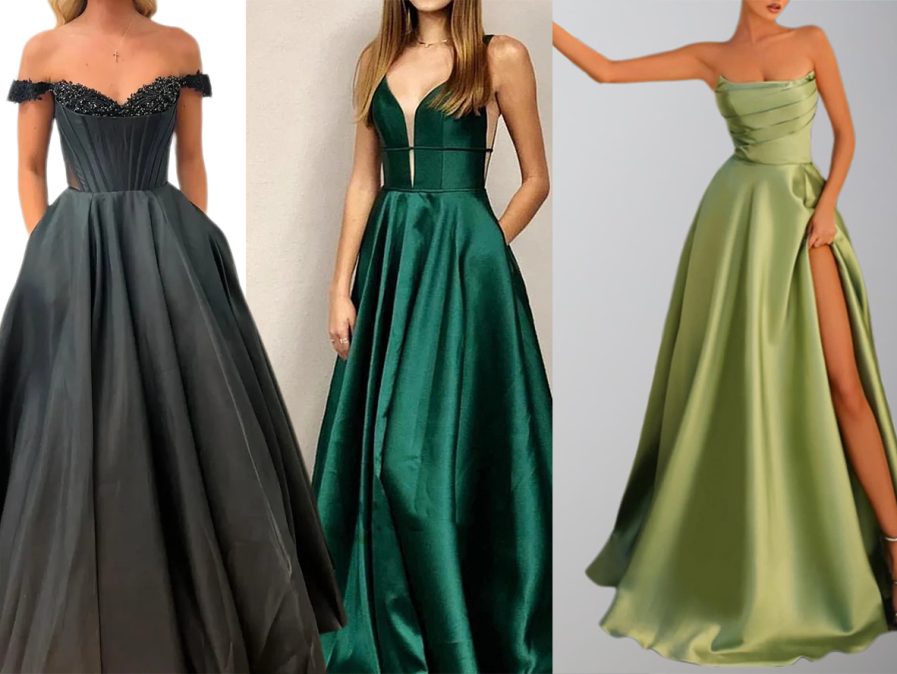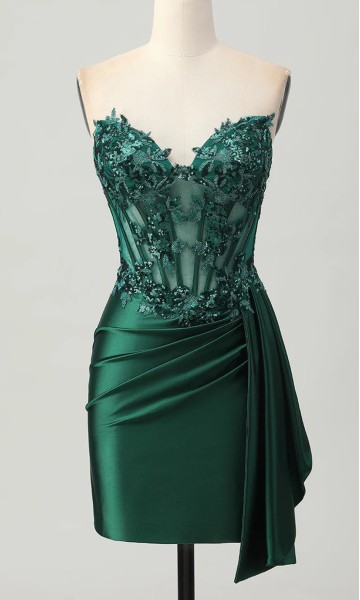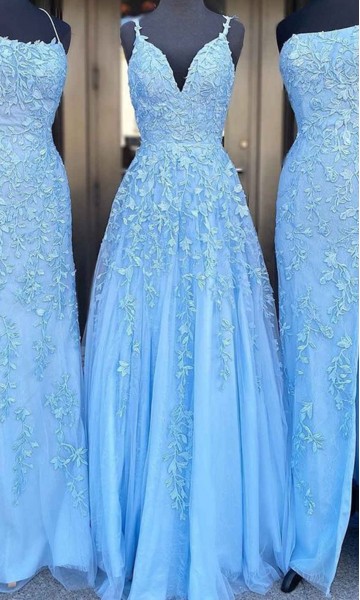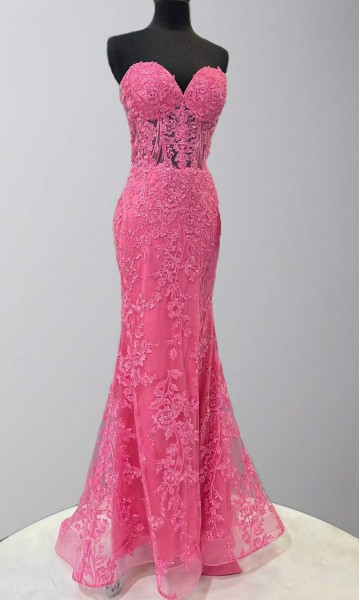Everything you need to know about dress codes, shopping tips, and having an unforgettable prom night
Understanding Your School’s Prom Dress Code: The Golden Rule
⭐ THE SINGLE MOST IMPORTANT RULE ⭐
Every school’s prom dress code is different!The absolute best thing you can do is check your school’s official written dress code or speak directly with an administrator or principal BEFORE purchasing or altering a dress.
Important things to remember:
School dress code rules typically apply to your guests as well, so make sure your date knows the guidelines before they choose their outfit. If they’re from a different school with more relaxed rules, they still need to follow YOUR school’s policies.
The purpose of prom dress codes isn’t to ruin your fun. Schools implement these guidelines to maintain a formal, respectful, and age-appropriate atmosphere for what is, at the end of the day, a school-sponsored event. Understanding this perspective can help you make choices that let you express your style while staying within the boundaries.
Prom Dress Code Guide 2026: What to Wear to Prom (Complete Rules & Tips)
Common Prom Dress Rules: The “Do Not Exceed” List
While every school is unique, most prom dress codes share similar guidelines. Here are the most common areas where schools place restrictions. Think of these as general “rules of thumb” that can help guide your shopping.
| Category | Common School Guidelines |
| Length/Hemline | Must not be shorter than a certain length (e.g., mid-thigh, just above the knee, or even to the knee). |
| Slits | Any high slits must not go above a certain point (e.g., mid-thigh). |
| Midriff/Cutouts | Two-piece dresses are often allowed, but only a very modest section of the midriff can show (e.g., 1-2 inches maximum, and typically no belly button showing). Cutouts in the bodice are often prohibited or must be covered by non-see-through mesh/fabric. |
| Neckline/Cleavage | Necklines should be modest and not cut below the bust line. Deep plunges are often prohibited. |
| Backline | Backless dresses are often permitted, but the low-cut back must not go below the natural waistline (the smallest part of the torso). |
| Sheer/See-Through Fabric | Fabric that gives the illusion of bare skin (especially over restricted areas) is often disallowed, or only small, fully opaque sections are allowed. Undergarments should not be visible. |
| Straps | Mention that strapless dresses and spaghetti straps are often allowed, but some schools may still have restrictions, so checking is essential. |
Dress Length Requirements
- Minimum length: Many schools require dresses to be fingertip length or longer when arms are relaxed at your sides. Some schools specify knee-length or no shorter than mid-thigh.
- High slits: If your dress has a slit, it typically cannot rise higher than mid-thigh or fingertip length. Some schools prohibit slits that go above the knee.
- The sitting test: Your dress should maintain appropriate coverage when you sit down, not just when you’re standing.
Neckline and Coverage Guidelines
- Cleavage limits: Low-cut or plunging necklines are commonly restricted. Schools may specify that cleavage should not be visible or excessive.
- Backless restrictions: Open backs typically cannot extend below the bottom of the shoulder blades or lower than where a bra band would sit.
- Shoulder and strap requirements: Some schools require straps to be at least one or two inches wide, while others may prohibit strapless dresses entirely.
- Midriff coverage: Two-piece dresses or crop tops are frequently prohibited. If allowed, they usually require that the midriff area be covered when standing with arms raised.
Fit and Fabric Restrictions
- See-through fabrics: Sheer panels, mesh, or transparent fabric must have appropriate lining underneath. Visible undergarments are prohibited.
- Tight-fitting dresses: Dresses should not be excessively tight or form-fitting to the point of being revealing. You should be able to move, sit, and dance comfortably.
- Cutouts: Side cutouts, stomach cutouts, or other revealing cutouts may be prohibited or have size restrictions.
What NOT to Wear to Prom
Prom is a formal event, which means certain types of clothing are automatically inappropriate regardless of your school’s specific dress code. Here’s what to avoid:
Prohibited Casual Attire for Prom Night (Save It for Another Day)
- Jeans, denim of any kind, cargo pants, or casual pants
- T-shirts, hoodies, sweatshirts, or casual tops
- Sneakers, athletic shoes, flip-flops, sandals, or casual footwear
- Athletic wear, gym clothes, or sports jerseys
- Baseball caps, beanies, or casual headwear
Offensive or Inappropriate Prom Clothing
- Costumes, cosplay, or themed outfits (unless it’s specifically a themed prom)
- Clothing with offensive language, symbols, or graphics
- Political slogans or controversial messaging
- Clothing promoting drugs, alcohol, or violence
Pro Tip: When in doubt, remember that prom attire should be formal, elegant, and appropriate for a school event. If you wouldn’t wear it to meet your principal or grandparents, it’s probably not right for prom!
( Continue to read: Prom Dress Don’ts: What to Avoid )
Prom Dress Shopping Tips: How to Avoid Dress Code Violations
Follow these practical strategies to avoid dress code violations and ensure your perfect dress gets you into prom, not sent home from it.
1. Ask Before You Buy
If you’re uncertain about whether a dress meets your school’s dress code, don’t take chances with your money. Take clear photos of the dress from the front, back, and sides, then email them to your principal, vice principal, or the prom coordinator for pre-approval. Most administrators would rather answer questions beforehand than turn students away at the door.
2. The Motion Test
Always try on dresses and perform what we call the “motion test.” While wearing the dress, sit down, stand up, raise your arms, bend over slightly, and simulate dancing movements. Check that nothing lifts up, falls down, gaps open, or separates in a way that could violate the dress code. A dress that looks perfect while standing still might reveal problems when you’re actually moving around at prom.
3. Plan for Alterations
Buy the correct size for your body. A dress that’s too small will stretch and pull in ways that can make even a modest design look inappropriate. A dress that’s too large may gap, slip, or require constant adjusting throughout the night. If you fall between sizes or need adjustments, budget time and money for professional alterations. A good tailor can make almost any dress fit perfectly and appropriately.
Continue to read: Prom Dress Alterations: How Much It Will Cost UK (And What You Need to Know)
4. The Power of Accessorizing to Save the Inappropriate Prom Dress
If you’ve already purchased a dress that’s borderline or slightly outside the rules, don’t panic. There are elegant solutions that can make a revealing dress prom-appropriate:
- Fashion tape: Secure necklines and prevent wardrobe malfunctions
- Sheer boleros, wraps, or shrugs: Add coverage to shoulders and back while maintaining elegance
- Lace or mesh panels: A seamstress can add matching fabric to fill in cutouts, lower backs, or plunging necklines
- Modesty panels: Can be sewn into low-cut necklines for additional coverage
- Slip extensions: Add length to short dresses with a coordinating underskirt
Remember: It’s much easier (and cheaper) to add coverage to a dress than to return one that doesn’t meet dress code requirements, especially if alterations have been made or tags have been removed.
What Happens If Your Prom Dress Breaks the Rules?
Understanding the potential consequences of dress code violations isn’t meant to scare you—it’s meant to help you understand why following the guidelines matters. Schools enforce dress codes to ensure everyone has a positive, comfortable experience at prom.
Possible Consequences Include:
- Denied entry: You may not be allowed into the prom venue at all. This is especially heartbreaking after spending money on tickets, the dress, hair, makeup, and possibly transportation.
- Required cover-up: You might be asked to cover up with a borrowed shawl, jacket, or coat for the entire evening. While this allows you to attend, it can be uncomfortable and prevent you from wearing the dress you carefully selected.
- Sent home to change: Some schools will require you to go home and change into something appropriate before returning. By the time you come back, you may have missed grand march, photos, or other special moments. Most schools do not offer refunds for prom tickets in these situations.
- Additional discipline: Depending on your school’s policies and whether you were warned beforehand, there may be additional consequences such as detention or being barred from future school events.
The good news is that all of these situations are completely avoidable. By taking the time to review your school’s dress code, getting approval if you’re uncertain, and making smart shopping choices, you can ensure that the only thing you’re worried about on prom night is having an amazing time.
Frequently Asked Questions About Prom Dress Codes
Q: Can I wear a two-piece dress to prom?
A: It depends on your school’s specific policy. Many schools allow two-piece dresses as long as no midriff is showing when you stand with your arms at your sides or raised above your head. Some schools prohibit them entirely. Check your dress code or ask an administrator before purchasing a two-piece gown
Q: Are jumpsuits or pantsuits allowed at prom?
A: Most schools that focus on formal attire will allow elegant jumpsuits or pantsuits as alternatives to dresses. These should still meet all other dress code requirements regarding fit, coverage, and formality. When in doubt, get pre-approval from your school administration.
Q: What if my date is from another school with different dress code rules?
A: Guests must follow the dress code of the school hosting the prom, not their own school’s rules. Make sure you share your school’s dress code with your date well in advance so they can shop accordingly. Guest violations can also result in denied entry.
Q: Can I get in trouble for posting prom photos on social media if my dress violates the dress code?
A: While you likely won’t face retroactive punishment for photos, posting pictures in a dress that violated dress code could affect your ability to attend future school events. More importantly, if school officials see the photos before prom, they may flag your dress and require changes.
Q: What counts as “fingertip length”?
A: Fingertip length means when you stand up straight with your arms relaxed at your sides, the hem of your dress should reach at least as low as the tips of your middle fingers. This measurement can vary based on arm length, so it’s a general guideline rather than an exact measurement.
Q: Are sparkly or sequined dresses considered too flashy?
A: No! Embellishments like sequins, beading, rhinestones, and sparkle are perfectly appropriate for prom as long as the dress itself meets all coverage and length requirements. Prom is your night to shine—literally!
Q: What if I lose weight or gain weight before prom and my dress no longer fits properly?
A: Visit a professional tailor as soon as possible. They can take in or let out seams, adjust straps, or make other modifications to ensure your dress fits properly and maintains appropriate coverage. Don’t wait until the last minute, as alterations can take several weeks during busy prom season.
Q: Can I wear a cultural or religious garment to prom?
A: Yes! Schools must make accommodations for cultural and religious dress. If you plan to wear traditional cultural attire or have religious dress requirements, communicate with your school administration early to ensure everyone is on the same page and no issues arise at the door.
Q: Is there a dress code for prom shoes?
A: Most schools focus dress codes on clothing rather than footwear, but shoes should still be formal. Heels, dress flats, dressy sandals, or formal loafers are typically appropriate. Avoid athletic shoes, flip-flops, casual sneakers, or anything you’d wear to the gym.
Q: What should I do if I see someone else wearing a dress that breaks the rules?
A: Focus on enjoying your own prom experience. School chaperones and administrators are responsible for enforcing dress codes. Getting involved in policing others’ attire can create unnecessary drama and take away from everyone’s enjoyment of the night.
📚 Helpful Resources
Where to Find Your School’s Official Dress Code
- Your school’s student handbook (physical copy or online)
- School website—check under student life, prom information, or policies
- Email announcements from administration about prom
- Prom ticket purchase materials or permission slips
- Ask your principal, vice principal, or student activities coordinator directly
Shopping Tips and Guides
- Start shopping 3-4 months before prom to allow time for shipping and alterations
- Shop with your school’s dress code printed out or on your phone
- Bring a trusted friend or family member who will give honest feedback
- Take photos in the dressing room (if allowed) to review later
- Check return policies before purchasing—some formal wear stores have strict no-return policies on special occasion dresses
Budget-Friendly Options
- Rent a dress from services like Rent the Runway or local formalwear shops
- Shop consignment stores, thrift stores, or online resale platforms
- Borrow from friends or older siblings who have attended prom
- Look for end-of-season sales at department stores and boutiques
- Check if your school or community has a prom dress donation program
Alteration and Modification Services
- Local seamstresses and tailors—ask for references from friends or check online reviews
- Dry cleaners often offer alteration services
- Bridal shops sometimes accept prom dress alterations
- Book alteration appointments at least 4-6 weeks before prom
- Bring your shoes to alteration appointments for accurate hem measurements
Modesty Solutions and Accessories
- Fashion tape and adhesive solutions to secure necklines and straps
- Modesty panels and inserts available from bridal and formalwear suppliers
- Sheer wraps, boleros, and shrugs from department stores or online retailers
- Custom matching fabric panels from your seamstress
- Undergarment solutions like strapless bras, shapewear, and slip shorts for coverage and comfort
Pre-Prom Checklist
- ✓ Read your school’s complete dress code at least 2 months before prom
- ✓ Get pre-approval from administration if your dress is questionable
- ✓ Share dress code with your date or guest
- ✓ Complete all alterations at least 1 week before prom
- ✓ Do a final fitting with shoes, undergarments, and accessories
- ✓ Perform the motion test (sitting, dancing, bending, arms raised)
- ✓ Pack an emergency kit (safety pins, fashion tape, stain remover, band-aids)
✨ You’re Ready to Shine!
Prom is one of the most memorable nights of your high school experience, and choosing the perfect dress is a huge part of making it special. By understanding and following your school’s dress code, you can focus on what really matters—feeling confident, comfortable, and ready to create amazing memories with your friends.
Remember that dress codes aren’t designed to limit your style or personality. They’re simply guidelines to ensure everyone feels comfortable and respected at a school event. Within those boundaries, there are countless beautiful, elegant, and stunning options that will make you look and feel incredible.
Your perfect prom dress 2026 is out there—one that makes you feel like the best version of yourself AND gets you through the door without any drama.
Now go forth and find that dress! Take your time, ask questions when you need to, and most importantly, choose something that makes you feel absolutely amazing. Here’s to a prom night filled with laughter, dancing, unforgettable photos, and memories that will last a lifetime!
Remember: This guide provides general information about common prom dress codes. Always consult your specific school’s official policies for accurate requirements.
You may also interested in:
How to Accessorize Prom Dress for the Perfect Look 2026
What Makes a Dress a “Prom Dress”?
Prom Dress Color Guide: The Perfect Jewelry, Shoes, and Clutch for Every Hue
The Ultimate 2026 Prom Planning Timeline: Your Step-by-Step Guide





